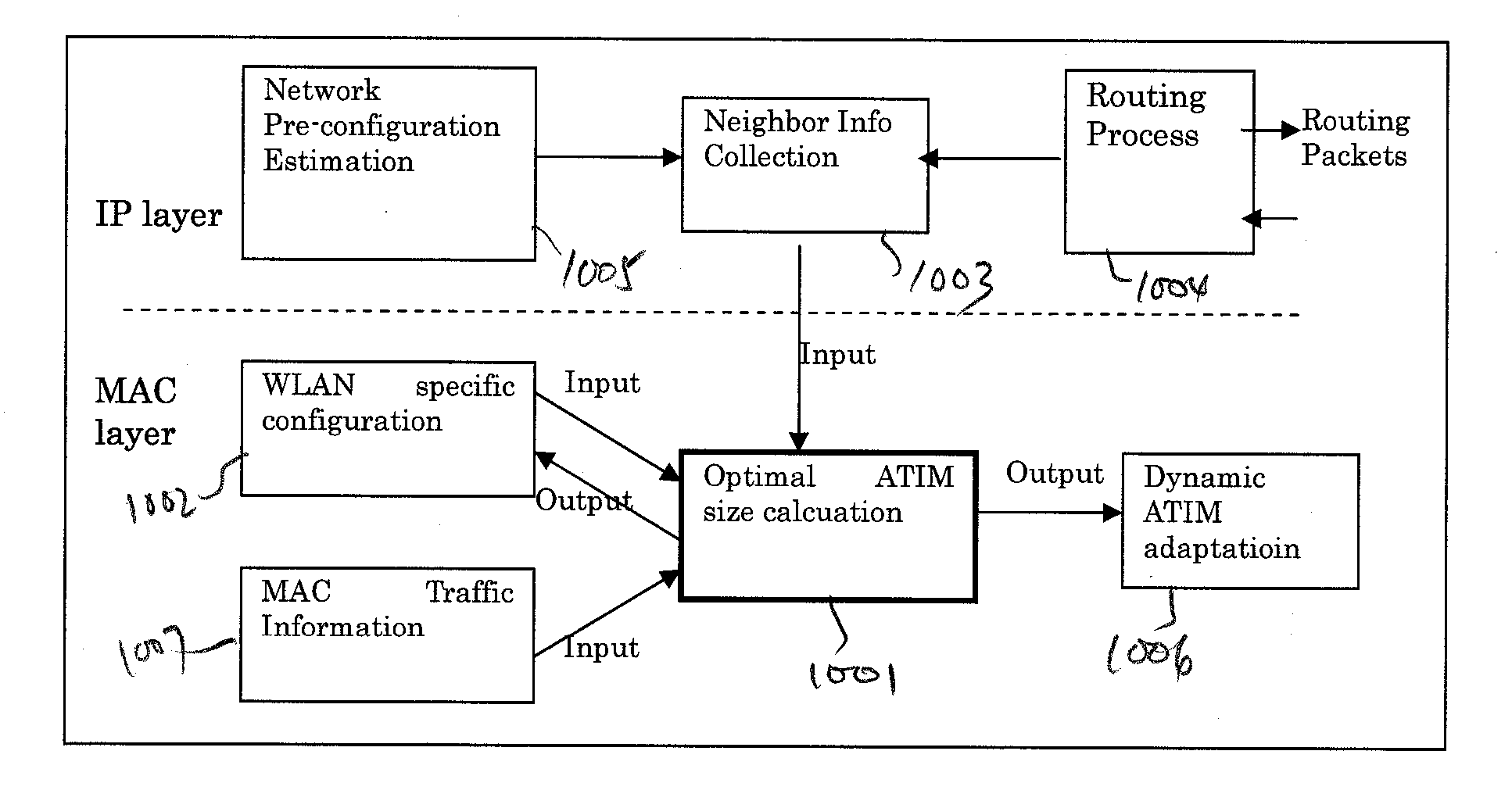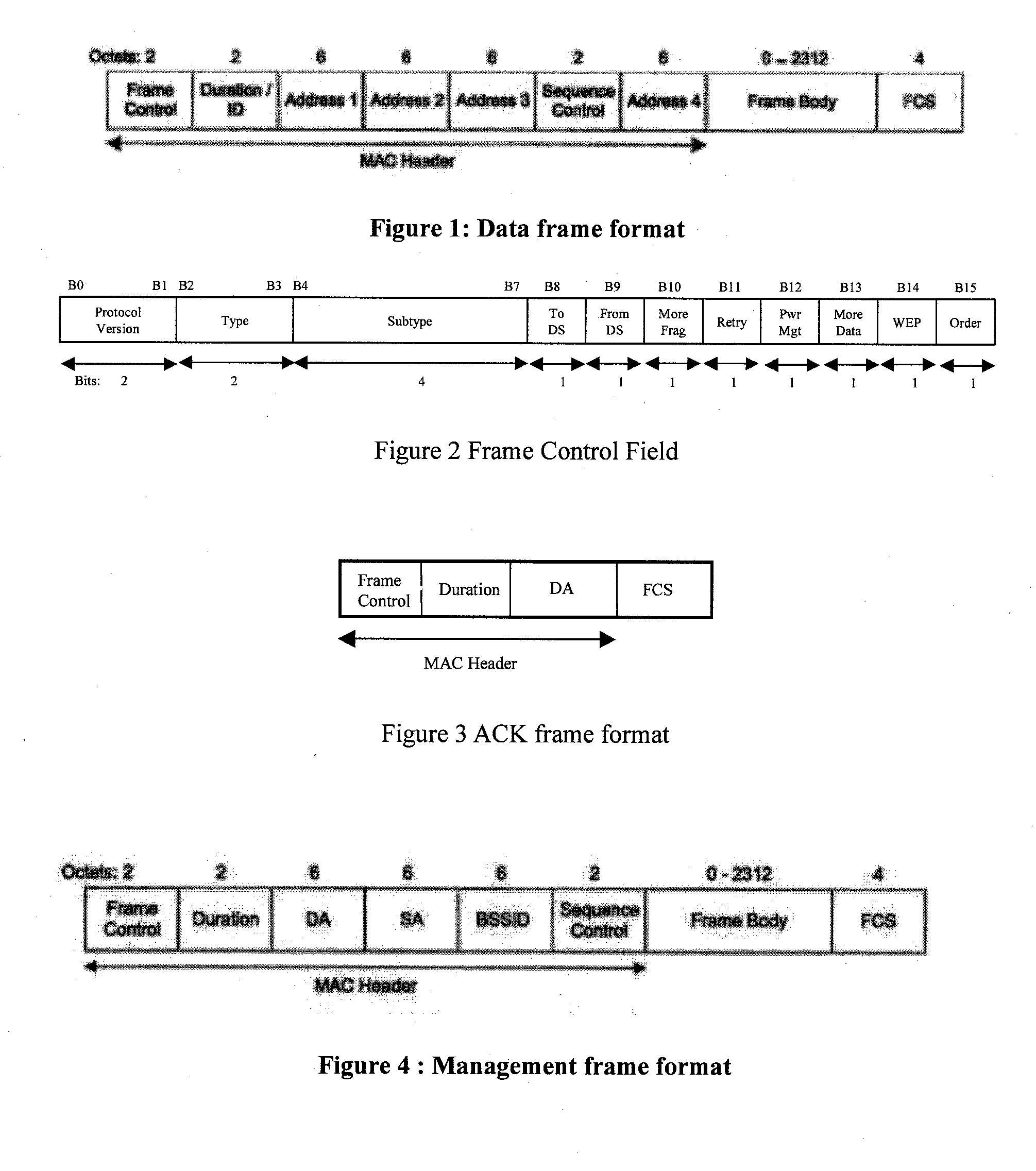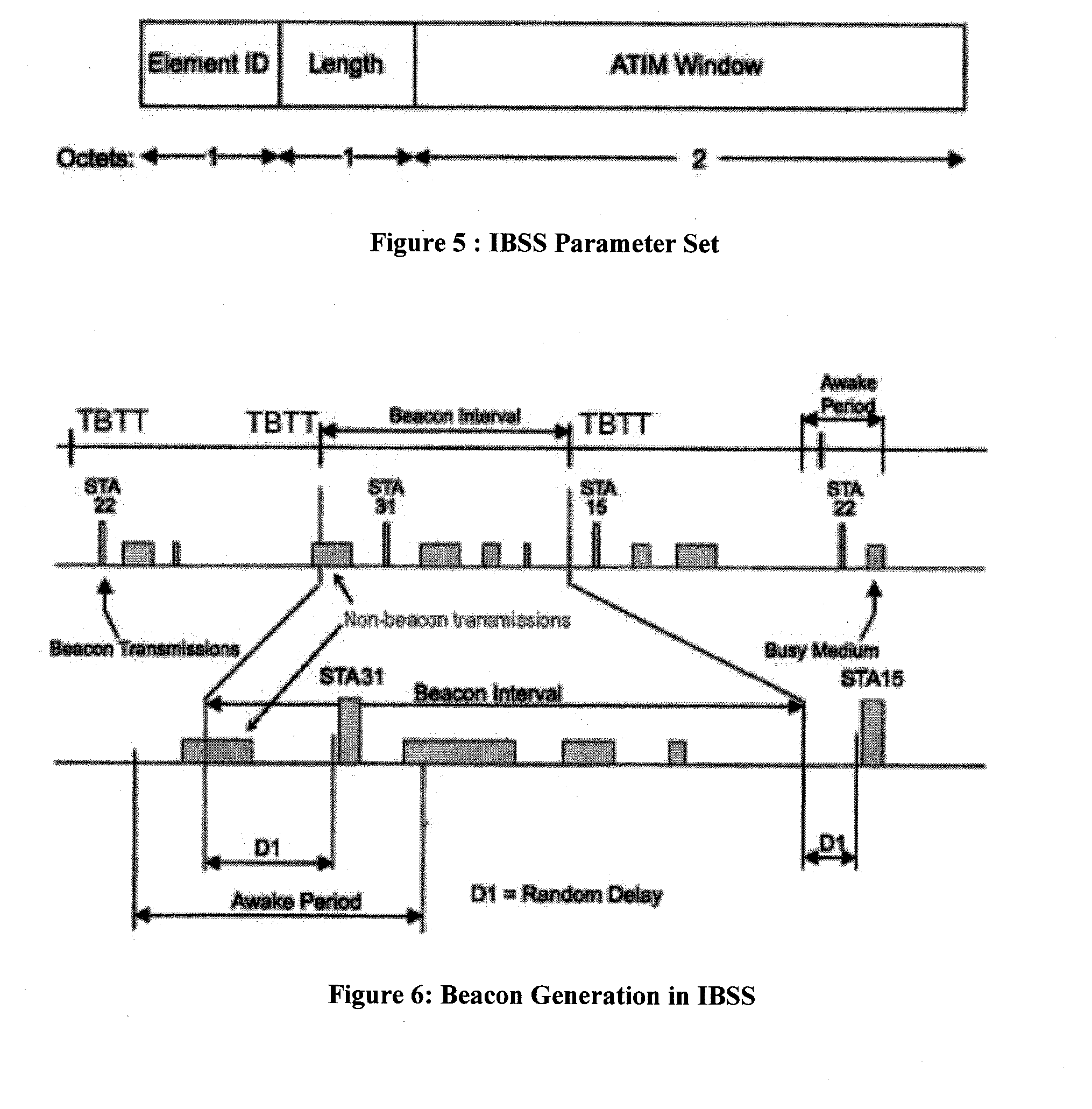Method and apparatus for optimal atim size setup for 802.11 networks in an ad hoc mode
a technology of ad hoc wireless and network size, applied in the field of wireless computer network operation, can solve the problems of poor performance, lagging battery life improvement, and poor power management in the link layer of an ad hoc wireless network, and achieve the effect of reducing power consumption and good performan
- Summary
- Abstract
- Description
- Claims
- Application Information
AI Technical Summary
Benefits of technology
Problems solved by technology
Method used
Image
Examples
Embodiment Construction
[0047] According to one embodiment of the present invention, an algorithm optimizes the ATIM window size for a give IBSS network based on a number of STAs in the network. In this embodiment, (a) STAs sending out or receiving ATIM messages within the ATIM window remain in the “awake” state until the end of the next ATIM window, as required by the 802.11 standards; (b) all STAs operate in a power saving mode (i.e., there are no always-on stations); (c) all nodes in the IBSS network can hear each other and, as a result, form a clique; (d) all STAs have equal priority; and (e) only STAs that have a successful ATIM / ACK message exchange during the ATIM window may transmit during the data transmission window. FIG. 8 shows a beacon interval made up of an ATIM / ACK window (TATIM) and a data transmission window (TD). In STAs nodes that have no direct ATIM / ACK exchange may, however, infer each other's power saving state.
[0048] In one embodiment, the time interval between two adjacent transmiss...
PUM
 Login to View More
Login to View More Abstract
Description
Claims
Application Information
 Login to View More
Login to View More - R&D
- Intellectual Property
- Life Sciences
- Materials
- Tech Scout
- Unparalleled Data Quality
- Higher Quality Content
- 60% Fewer Hallucinations
Browse by: Latest US Patents, China's latest patents, Technical Efficacy Thesaurus, Application Domain, Technology Topic, Popular Technical Reports.
© 2025 PatSnap. All rights reserved.Legal|Privacy policy|Modern Slavery Act Transparency Statement|Sitemap|About US| Contact US: help@patsnap.com



